
Neironično, mistično miksanje iskašljaja pop-kulture.
An ill wind is transitting through the lonely night, spreading myth and deception along its murky path. Conjuring a vision of a post-apocalyptic paradise, this unworldly broadcast reveals its hidden demons via layered landscapes and karaoke, singing the dangers of the mediated spirit.-MR
And We All Shine On (Michael Robinson, 2006) - "There's a powerful idea lurking in the current obsession with the retro and the nostalgic, and Robinson cuts to the core of it: the media of previous generations is so weighted with emotional import and meaning that exists almost entirely outside of the media itself, in the minds and memories of those who experienced it when it was fresh. Thus Robinson is trying to make these things new again, to recreate the sense of danger and mystery and strangeness that accrues to something that's new. He's delving into nostalgia to find the monsters lurking there, but rather than rendering them harmless through the filter of fond remembrance, he's trying to capture them in all their fearsome, memory-distorted glory, not as collections of pixels but as blurry figments of fevered childhood imagination."
14 filmova ovdje ili na Vimeu
The first film Michael Robinson made, at age 11, was a home-movie remake of Poltergeist, later repurposed into Carol Anne Is Dead (1992/2008). In both, Robinson’s sister presses her palms to the glass of a television monitor, its screen glowing with static. It’s a fitting image for Robinson’s pop distortions, indicating the filmmaker’s willingness to get close to his objects. The motif of the television set returns in Light Is Waiting (2007). In a scene from the sugary ‘80s sitcom Full House, two teenage girls carry a heavy monitor up a flight of stairs and accidentally drop it over the bannister. The impact launches a stroboscopic, slow-motion journey to a remote island; by splitting and mirroring the frame down the middle, Robinson holds the crashed TV image up to its own involuted weirdness.
Robinson’s films describe a pop-cultural terrain, found-footage puzzles culled from the media archive of his own childhood. Instead of ironic detachment, however, Robinson taps directly into the powers of pop. He allows the jumbled fragments of Top 40 hits and after-school specials to crash spectacularly, and in doing so exposes their overwhelming force, still potent even when severed from their sources. Robinson gives in to the seductions of media, the hallucinatory spell of melodramatic or horrific excess, the rush of science fiction’s utopian promises, and even the austere aesthetics of 16mm experimental film, and emerges on the other side, though not entirely unscathed. The viewer, too, is sometimes left with a momentary retinal burn.
Often we hear echoes of an empty orchestra, a familiar sound that can’t quite be placed. The instrumental strains of “November Rain” in Victory Over the Sun (2007) impart a sense of hollow grandeur, while the synth karaoke sweep of “Nothing Compares 2 U” in And We All Shine On (2006) fills a 16-bit videogame landscape with longing and loss. If There Be Thorns (2009), meanwhile, explicitly attempts to make present what’s missing. Castaway on a desert island—the same, perhaps, as the nightmare paradise of Light Is Waiting—Robinson searches for traces of his scattered siblings. Their reunion occurs in a flickering blaze that, as subtitles from an appropriated Shirley Jackson novel tell us, also resembles the fire that flung them apart. Has he truly found them, or is this merely a memory, a dream? Fleetwood Mac’s lonely “Storms” plays at film’s end, and though the words aren’t sung here, they haunt the film nonetheless: “Every night you do not come, your softness fades away.” - Genevieve Yue
Four Michael Robinson shorts, 2006-2010
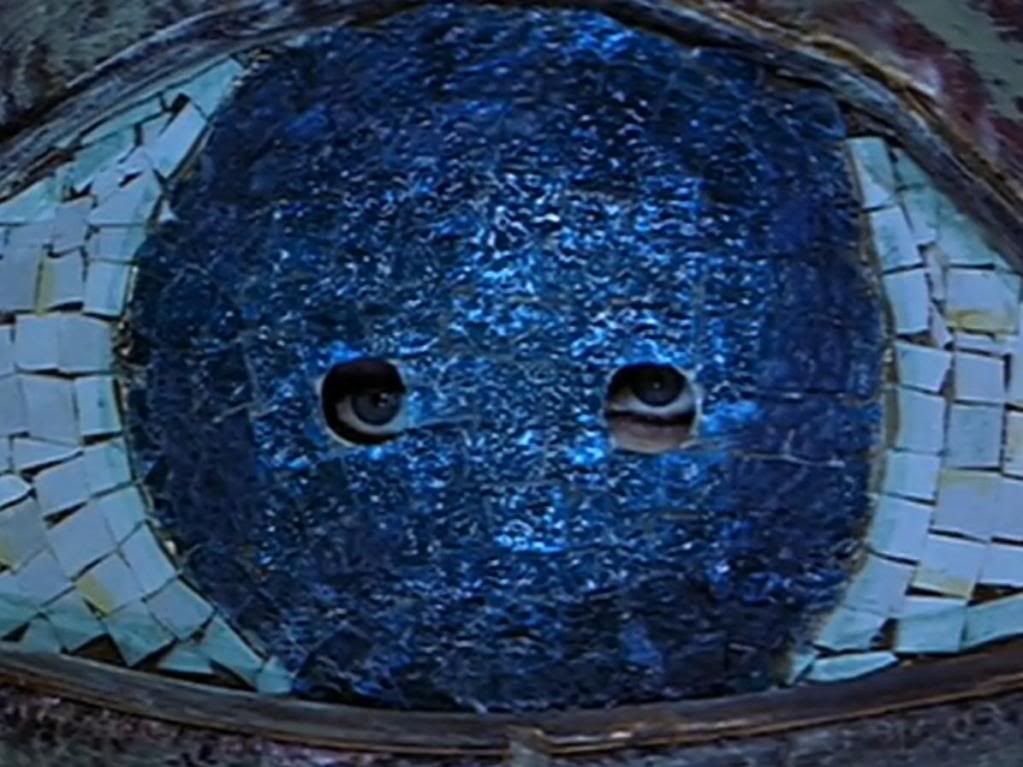
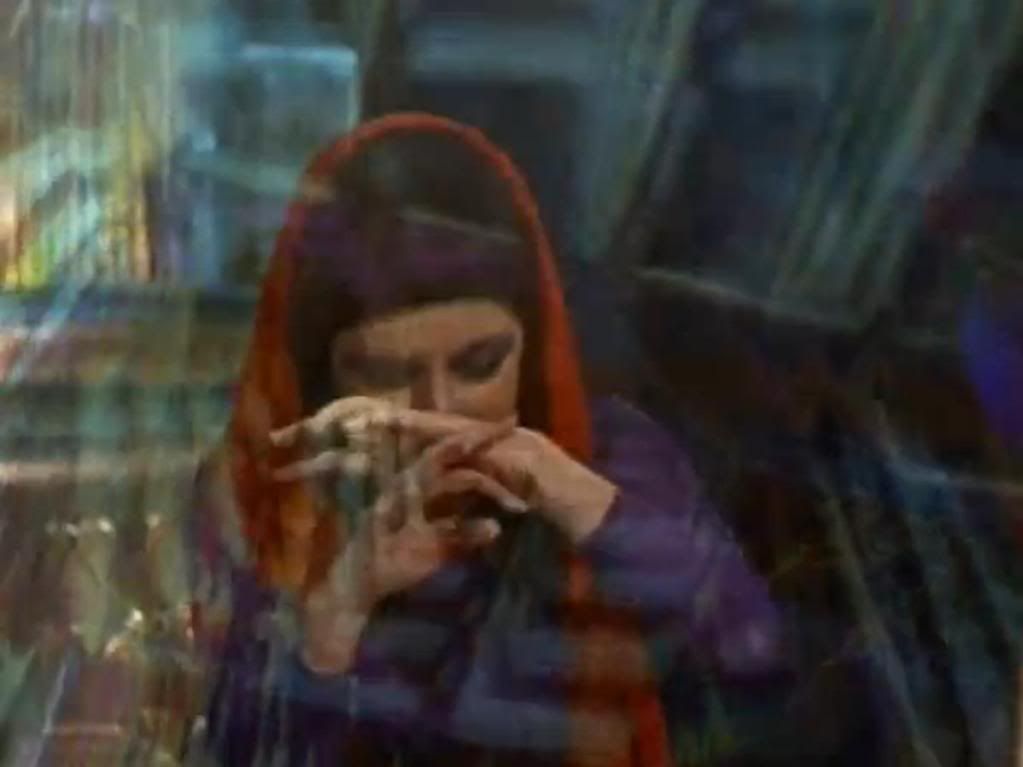
Probably one of the worst aspects of contemporary culture is the tendency to "ironically" appreciate the cultural relics of the past. Thankfully, there's hardly a trace of irony in the filmmaker Michael Robinson's program of delving into the trash bin of cultural history. Robinson appropriates discarded bits of pop culture not as a vehicle for retro fetishism, but in the hopes of discovering something genuine within these seemingly ephemeral media fragments: an emotion, an experience, the quality of a strong memory, an association with something concrete and true beyond the disposable realm of pop culture junk. His short video works can be watched for free on Vimeo.
These Hammers Don't Hurt Us is a work that straddles the futuristic, the postmodern, and the campy, fusing hazy computer animations in hallucinogenic neon with montaged clips from Joseph Mankiewicz's 1963 Liz Taylor vehicle Cleopatra and Michael Jackson's Egyptian-themed music video for his 1992 single "Remember the Time." Robinson is blending together the media of multiple eras, appropriating bits of kitschy cultural detritus and re-contextualizing them into something that's actually transcendent and mystical. The source material that he uses is Egyptian kitsch, a common motif in Western trash culture, which often casts the East and the Orient as sites of garish, alien ethnic spectacle, taking the myths and religions of other cultures and turning them into pop bombast.
Robinson's film attempts to channel this pop mythology in a way that reawakens the mystical potential lost in the translation to Hollywood and MTV. The computer animations recall the rainbow-colored hyperspace of 2001: A Space Odyssey, appropriate because Robinson is inviting viewers to journey into this strange, unsettling space that exists somewhere between the real, lost, historical Egypt and the pop culture approximations of that place and time, of its myths and its people. In between the hypnagogic Taylor/Jackson montages, Robinson periodically shows sparkling suits studded with bright jewels, clothing that looks like a spacesuit as imagined by a Pharaoh's wardrobe designer, simultaneously futuristic and a throwback.
Robinson is arranging conversations between various pop culture artifacts and the real cultures they're drawing on. At one point, he ingeniously links the Taylor Cleopatra with Michael Jackson via a scene where Taylor peers out of a spyhole — a pair of eye sockets cut into a larger mosaic eye, so that Taylor's blue eyes are peering out of a larger blue eye — and sees, of course, Jackson spinning and dancing with a coterie of Egyptian slaves. Taylor's Cleopatra looks out of her version of this story into another version, a similarly profane pop vision, and over time it all becomes overlaid with Robinson's computer abstractions, neon geometric patterns strobing across the screen as though the collision of these two images is causing a rip in the fabric of space and time. Later, as ice skaters in Egyptian garb gracefully glide around, the image is manipulated, its colors flickering wildly, the imagery blurred and distorted in ways that recall both VHS fuzz and digital pixelation. In this way, too, different eras are combined, and Robinson's computer manipulations — like those of the multimedia art collective Paper Rad, with whom he seems to share some aesthetic concerns — are simultaneously state-of-the-art and deliberately lo-fi.
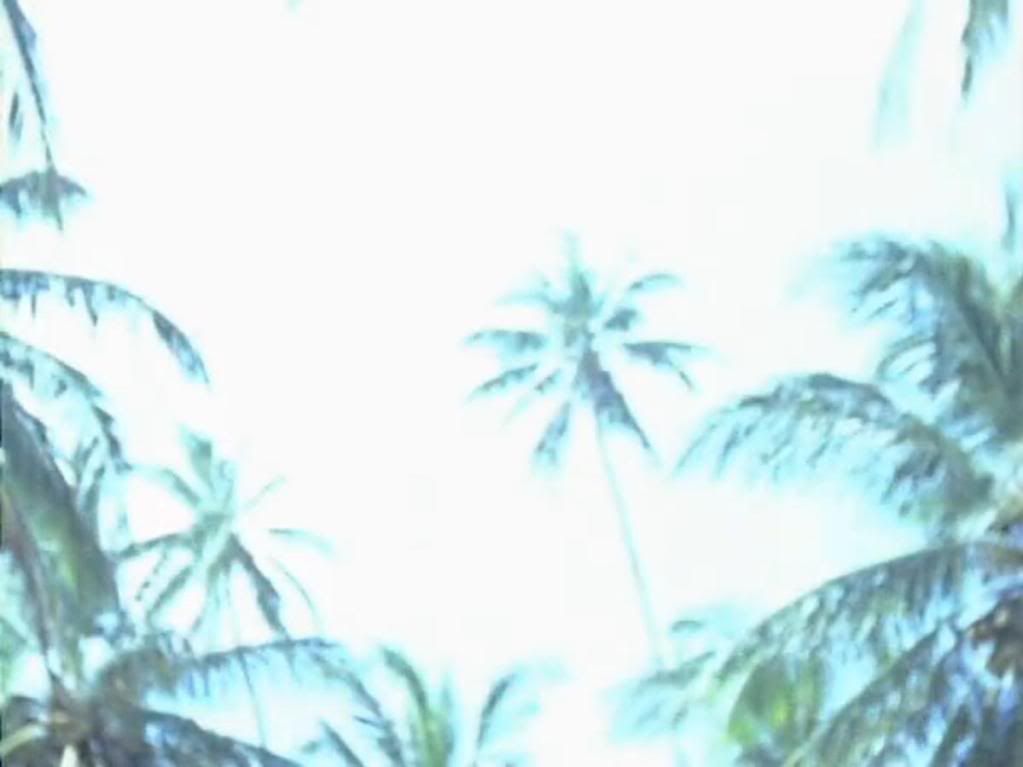
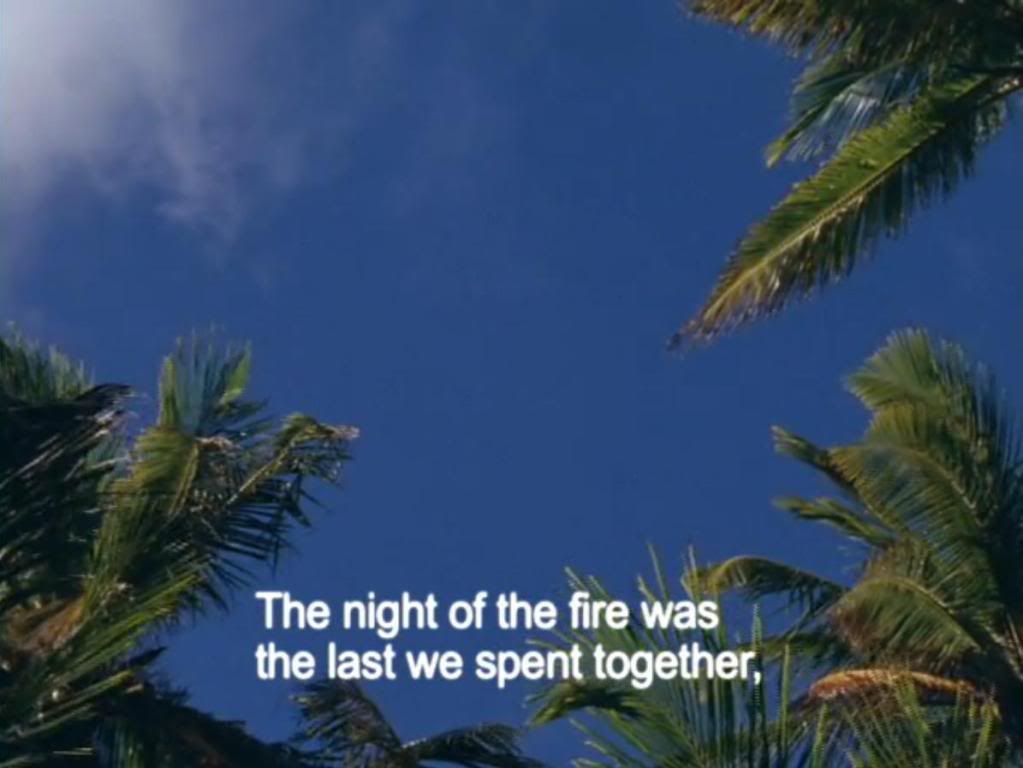
Michael Robinson's If There Be Thorns is an elliptical examination of isolation that might be described as David Lynch remaking the TV show Lost. Three figures, a woman and two men (Devon Sanger, Buck Hanson and Robinson), wander around alone in an unpopulated tropical paradise, leaving behind mysterious signs in the bark of trees or buried deep within thickets of foliage. They never meet except in the flickering, layered collages of faces that Robinson uses as interstitial material between the longer sections of these wanderers interacting with the natural world. The film never explains it symbolism, but there's something potent about the ways in which this trio marks up the world: slashes of red lipstick on a tree trunk, a bulbous egg full of nails, piles of dead brown ferns, rotting and misshapen fruits that are laid in the grass and promptly vanish. It's an iconography of death and decay, the lipstick looking like blood staining the wood, later connected with the cross of Christ as nails are driven into each of the red slash marks.
The film's story, such as it is, is communicated through onscreen snippets of prose taken from William S. Burroughs, Shirley Jackson, V.C. Andrews and Stevie Nicks, along with some of Robinson's original contributions. It's an unlikely combination of voices that is nonetheless smoothed down here into a more or less coherent narrative of separation and yearning, loss and nostalgia. This loneliness is enhanced by the minimalist soundtrack, in which a buzzing electronic ambiance periodically emerges from the whispery shushing of the wind or the chatter of insects.
Some of the imagery here is a little trite, as in the shot of one of the young men fading away like a ghost, an overly literal depiction of the film's theme of lost connections. For the most part, though, Robinson is more circumspect, implying this isolation indirectly. The three protagonists are rarely viewed in full; their arms reach into the frame, or they're glimpsed in the distance, partially obscured by foliage, or they stroll quickly by, their faces hidden from view. Even more often, Robinson's empty images of unblemished blue sky or rustling seaweed in the shallows of the ocean suggest the absence of humanity, as though all three protagonists have already disappeared, leaving behind only the abstract narrative of gaps and elisions provided by the text.
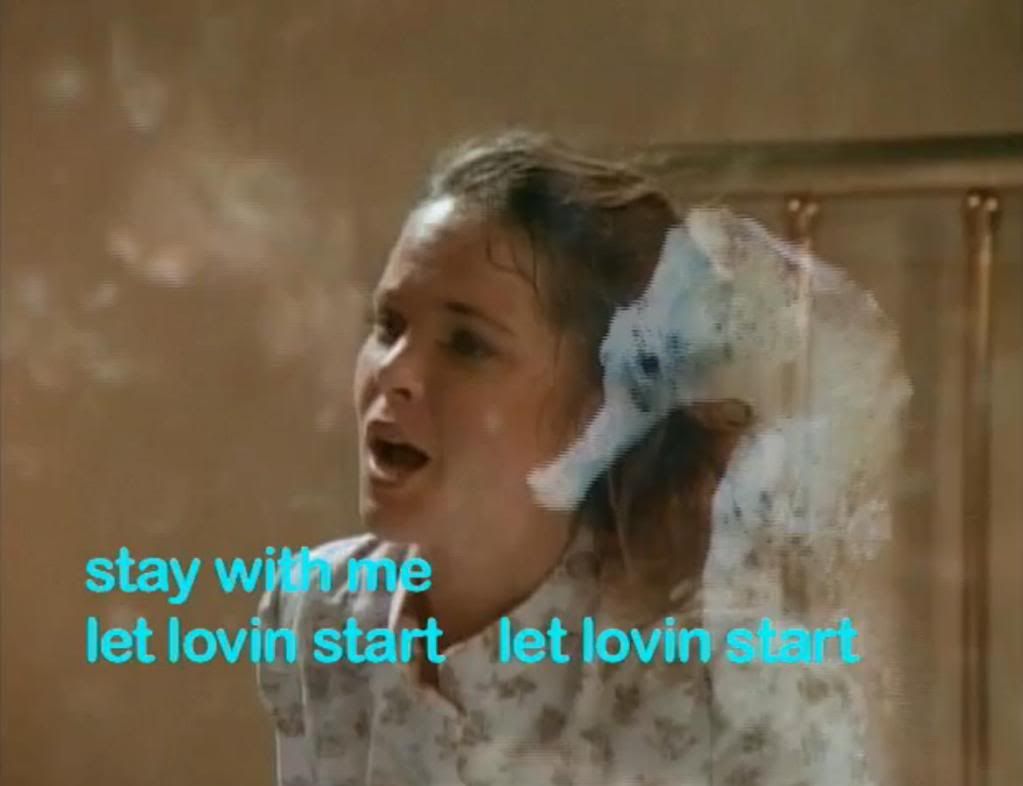
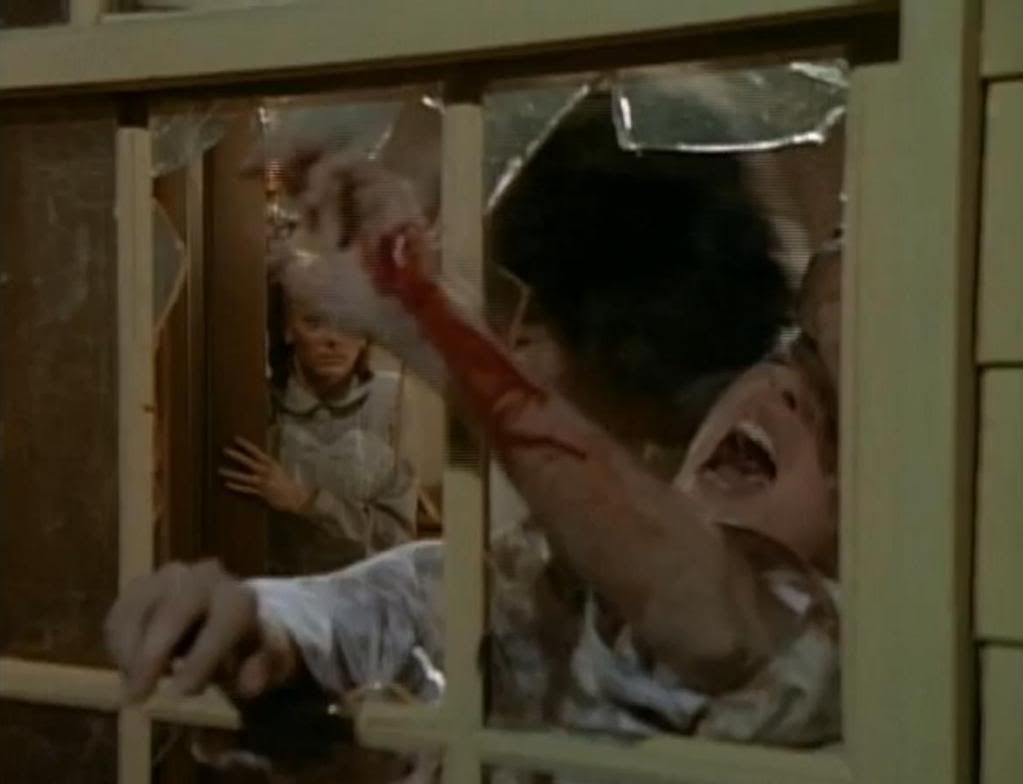
Hold Me Now is one of Michael Robinson's simplest films, and because of that it exposes the essence of his work — the strangeness of pop culture nostalgia — in an especially naked way. The film is diabolically simple: a clip from Little House on the Prairie, slightly slowed down and strobed between black frames, is overlaid with a karaoke version of the Thompson Twins' "Hold Me Now," which has no vocals on the verses and ghostly backing accompaniment on the choruses. Robinson then lays the unheard lyrics to the song on the screen as text, letting the romantic melancholy of the lyrics and the saccharine music jar against the unsettling emotions of the TV clip, in which Mary fights with Adam, thrashing on a bed and finally running across the room to thrust her hand through a window, streaming blood everywhere.
On one level, this video mash-up hinges on the rather basic irony contained in the disjunction between the yearning romanticism of the pop song lyrics and the increasing creepiness of this TV scene, snatched out of context like this. The flickering quality of the image provides a distancing effect that prevents one from watching it passively. The effect recalls the drastic time dilation of Martin Arnold, who similarly dissects seemingly innocent media to uncover more disturbing implications of sex and incestual longing, both of which seem to percolate through the Little House clip in this context as well. The song lyrics, which muse on a shattered love affair, reflect the nostalgia of this video, and of Robinson's general project, looking back to the past and finding not unspoiled innocence but something much weirder and more broken than one's memory had expected.
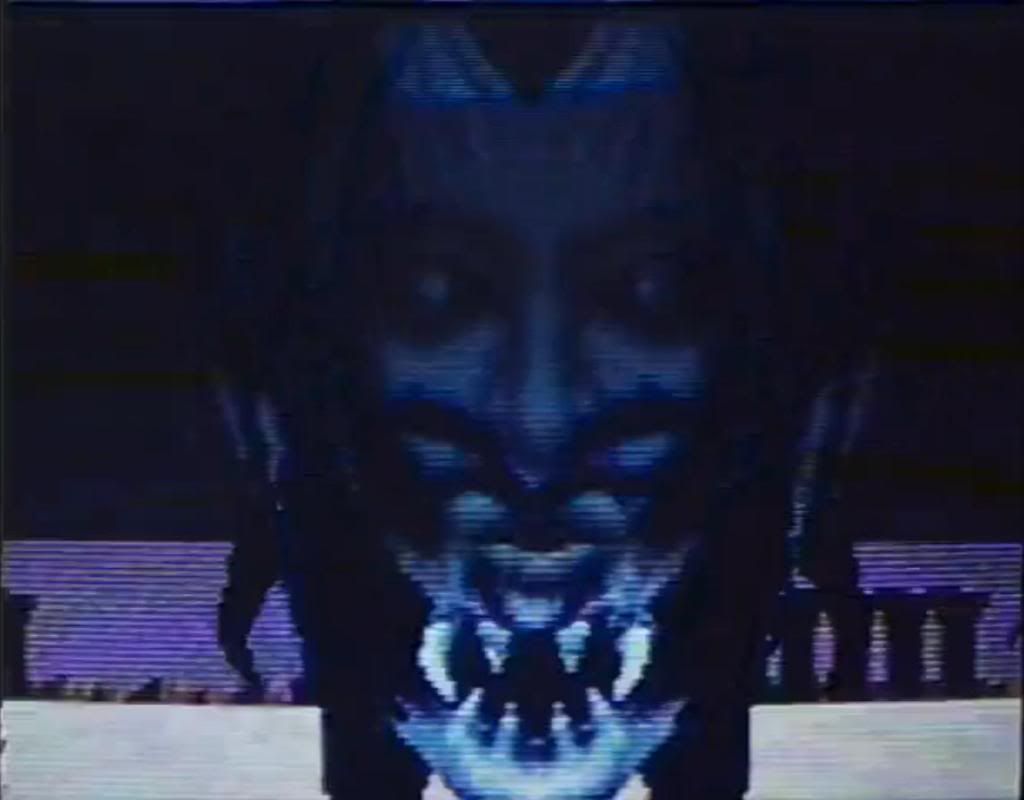
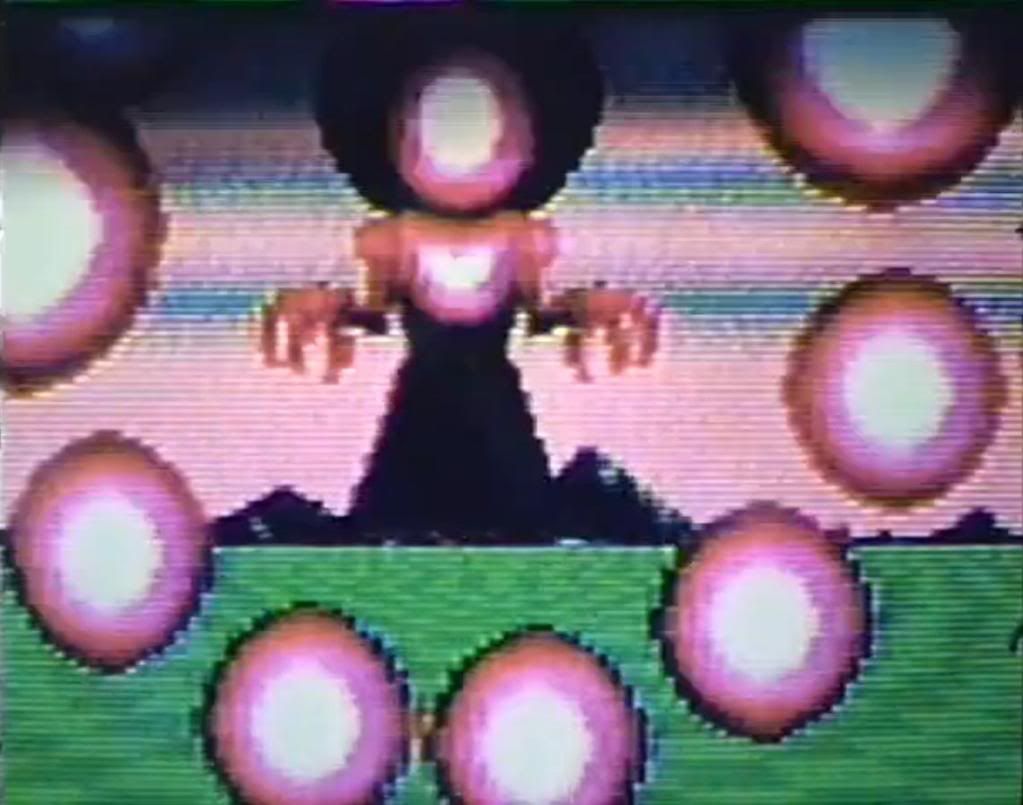
For And We All Shine On, Michael Robinson turns to the iconography of video games, particularly those crude examples dating from the dawn of the medium, the games that would have been played on the very earliest home video game systems. In between dark, mysterious bookend images of rustling trees that could be hiding any horror, Robinson crafts a montage of primitive, minimalist video game segments in which never-ending swarms of space invaders fly at the screen, waiting to be blown apart by the player. Robinson is approaching these old-school games with their first-generation graphics and lo-fi visual aesthetics not as they actually are, but as they seem to be through the filter of childhood memory. Beneath the hazy static distortion that Robinson layers over these games, they actually become eerie and creepy, their landscapes barren not because of limited processing power but because these really are remote alien horizons with monstrous creatures lurking just out of sight.
Robinson is attempting to bridge the gap between the shoddy reality of media and the out-of-proportion effect these transmissions can have on the impressionable mind. These games, as products of technology, are unavoidably dated today — just as, no doubt, today's games will soon enough seem dated and lame to future generations — but the memories of playing the games lack that retrospective perspective. When they were new, when kids were playing them for the first time, they didn't seem dated, or like products of their era, or like kitschy retro artifacts: the aliens seemed real, at least on some imaginative level, and the fun and the terror of fighting them was also real. Robinson is recreating the warping effects of memory, trying to make these clumsy digital aliens seem frightening and powerful again.
In the process, he's making a horror movie, drawing on the eternal fear of things that go bump in the night, the unseen monsters lurking in the trees that scratch against a kid's window, inspiring nightmares. He blows these hideous blocks of pixels up until they match the mythological power that they have come to possess in memory, blurring and layering the images if necessary to create composite horrors far more searing that any single frame could be. There's a powerful idea lurking in the current obsession with the retro and the nostalgic, and Robinson cuts to the core of it: the media of previous generations is so weighted with emotional import and meaning that exists almost entirely outside of the media itself, in the minds and memories of those who experienced it when it was fresh. Thus Robinson is trying to make these things new again, to recreate the sense of danger and mystery and strangeness that accrues to something that's new. He's delving into nostalgia to find the monsters lurking there, but rather than rendering them harmless through the filter of fond remembrance, he's trying to capture them in all their fearsome, memory-distorted glory, not as collections of pixels but as blurry figments of fevered childhood imagination.- seul-le-cinema.blogspot.com/

Nema komentara:
Objavi komentar